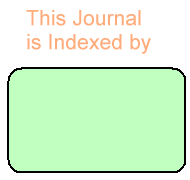Chinwe M Onah1,
Akudo D Obelu1,
Magnus C Nnadi1,
Joshua C Iloegbunam1,
Idaraobong N Akpan1,
Kizito C Ozioko1,
Ndidiamaka H Okorie2,
Charles O Nnadi1,3 ![]() ,
Cyprian O Onyeji1
,
Cyprian O Onyeji1
For correspondence:- Charles Nnadi Email: charles.nnadi@unn.edu.ng Tel:+234-8064947734
Received: 15 March 2025 Accepted: 17 May 2025 Published: 31 May 2025
Citation: Onah CM, Obelu AD, Nnadi MC, Iloegbunam JC, Akpan IN, Ozioko KC, et al. Monitoring the quality of quinine injection in retail outlets in south-east Nigeria. Trop J Pharm Res 2025; 24(5):591-597 doi: https://dx.doi.org/10.4314/tjpr.v24i5.3
© 2025 The authors.
This is an Open Access article that uses a funding model which does not charge readers or their institutions for access and distributed under the terms of the Creative Commons Attribution License (http://creativecommons.org/licenses/by/4.0) and the Budapest Open Access Initiative (http://www.budapestopenaccessinitiative.org/read), which permit unrestricted use, distribution, and reproduction in any medium, provided the original work is properly credited..
Purpose: To determine the pharmaceutical quality of quinine injections sold in retail outlets in South-East Nigeria. Methods: Eleven brands of 2 mL quinine injection (300 mg/mL) were examined for their quality and conformity to pharmacopeial standards. Various tests such as sterility, pH, clarity, extractable volume, test for identification and content uniformity test were performed as quality control measures. Content assay was determined by non-aqueous titration and UV spectrophotometry following the methods described in the British and United States Pharmacopoeias. Results: All brands were sterile, without leakages and contained no particulate matter on white and black backgrounds. The extractable volumes from all the brands were slightly higher than expected, 2 mL. pH analysis showed that the injections have a pH not higher than 4.0. Only the brand, coded QH06, was outside the standard acceptable content of 90 – 110 % in both assay techniques. The non-aqueous titrimetric technique showed that only samples coded QH02, QH03, QH04 and QH08 contained 90 – 110 % of quinine, representing 36.4 %, while 72.7 % of the samples contained quinine within 90 – 110 % using UV spectrophotometric assay. Conclusion: The study showed the presence of substandard quinine injection in Southeast Nigeria, which was characterized by suboptimal quinine strength. There is a need for regular post-marketing surveillance of available antimalarial injections in Nigeria to achieve therapeutic outcomes
Archives


News Updates